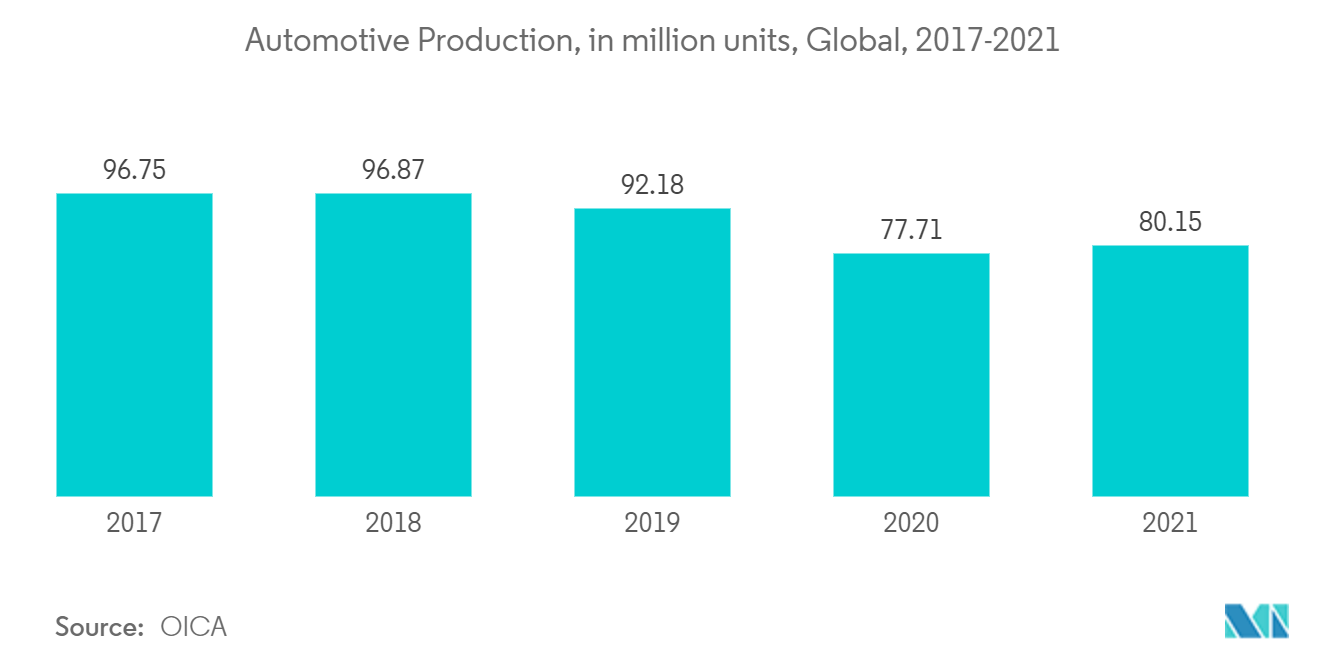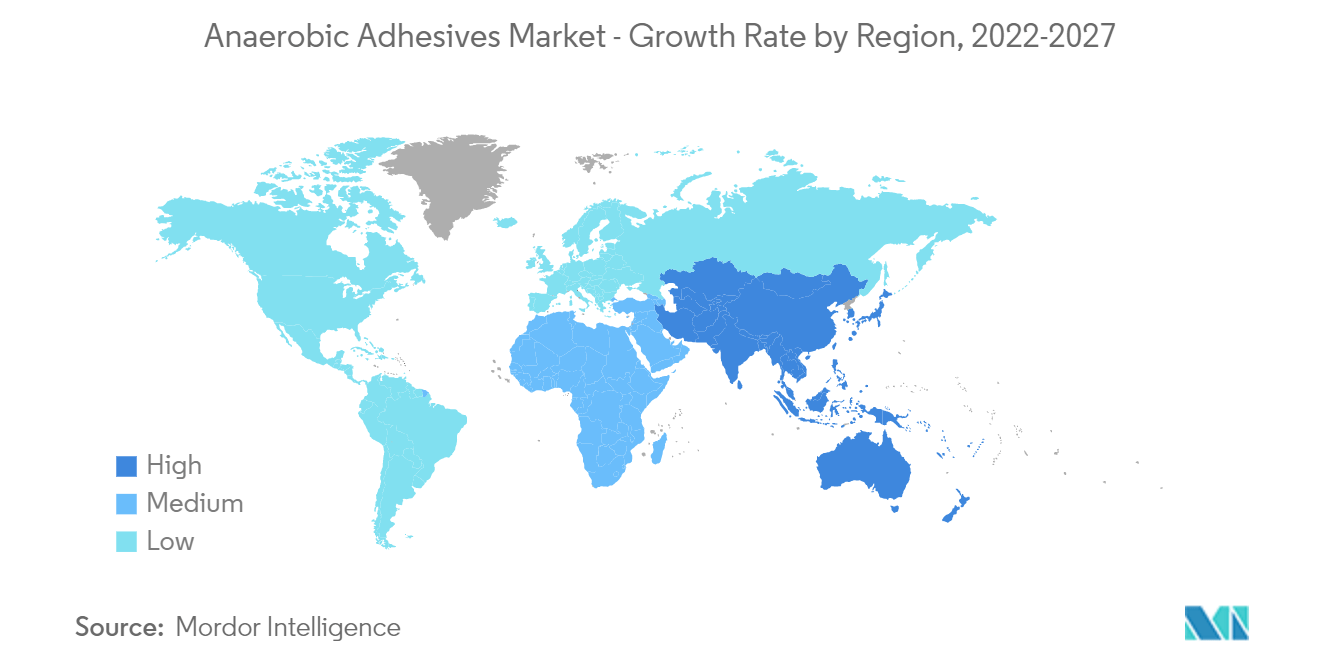Market Trends of Anaerobic Adhesives Industry
This section covers the major market trends shaping the Anaerobic Adhesives Market according to our research experts:
Increasing Demand from the Automotive and Transportation Industry
- In the automotive industry, retaining compounds, pipe sealants, gasket sealants, and thread-locking adhesives are widely used.
- They are used in the applications of engine and firewall sealing, engine monitor sensors, engine plug sealants, threaded hose connector sealants, threaded hose nipple sealants for pipes and straight threads of engine compartments, for interior sealing applications of thread-locking screws, bolts, and nuts, wheel bearings, automotive locking applications, automotive body/frame bolts, suspension areas, brakes, rear end, and transmission and many other applications.
- Anaerobic adhesives are also used in aerospace industry maintenance, repair, and operation (MRO) applications for applications including thread-locking, retaining, gasketing, and thread sealing. These adhesives help manufacturers avoid unnecessary machining of a wide range of mechanical components during MRO.
- The recent shift from Internal Combustion Engines to electric vehicles is driving innovation in automation technologies. Anaerobic adhesives replace mechanical fasteners as they may accommodate movements caused by thermal expansion and are not susceptible to corrosion.
- Adhesives are also preferred over conventional joining methods as they can prevent contact corrosion and provide impact resistance that is essential for withstanding the high dynamic forces of electric motors.
- The major automakers globally have announced plans to accelerate their electric vehicle future by developing new product lines and converting existing manufacturing facilities. For example:
- Toyota announced the roll-out of 30 Battery Electric Vehicles (BEV) models by 2030.
- Volvo is committed to becoming a fully electric car company by 2030.
- General Motors aims for 30 EV models and an installed production capacity of 1 million units in North America by 2025.
- In 2021, globally, 80.14 million automobile units were produced. This was an increase of 3% compared to 2020. The production of automobiles in Europe reduced by 4% compared to 2020, to 16.33 million units. The production increased by 3% compared to 2020 in America to 16.15 million units.
- The Asian-Pacific region witnessed a growth of 6% in 2021 compared to 2020 to 46.73 million units, while Africa witnessed a significant growth of 16% in 2021 compared to 2020 to reach 0.93 million units.
- In 2022, the joint venture company GAC Honda started the construction of a new car plant in Guangzhou, China. The plant is expected to have a capacity to produce 120,000 electric vehicles per year and is expected to start production by 2024. The investment amount is expected to be CNY 3.49 billion (~USD 0.5 billion).
- Such trends are driving the market for anaerobic adhesives.

Asia-Pacific Region to Dominate the Market
- Asia-Pacific dominates the market owing to various emerging markets in the region, specifically in countries like China and India.
- China is the largest manufacturer of automobiles globally. In 2021, according to the OICA, the automotive production in the country reached 26.08 million, which increased by 3%, compared to 25.23 million vehicles produced in 2020.
- A growth of 106% in battery-plugged-in electric vehicles was witnessed in November 2021 compared to the same period in 2020. The country's sales of electric vehicles reached around 413,094 units in November 2021. In addition, the market share also increased to 19%, including 15% of all-electric and 4% of plug-in hybrid cars.
- China is also one of the largest aircraft manufacturers and one of the largest markets for domestic air passengers. Moreover, the country's aircraft parts and assembly manufacturing sector has been growing rapidly, with over 200 small aircraft parts manufacturers increasing the usage and demand for anaerobic adhesives. According to the Boeing Commercial Outlook 2021-2040, in China, around 8,700 new deliveries will be made by 2040, with a market service value of USD 1,800 billion. Owing to such new deliveries in the country, the demand for the market studied is likely to rise.
- Furthermore, in India, according to OICA, around 43,99,112 vehicles were produced in 2021, which increased by 30% compared to 3,381,819 units manufactured in 2020.
- In the aerospace sector, according to the India Brand Equity Foundation (IBEF), the country's aviation industry is expected to witness INR 35,000 crore (~USD 4.99 billion) investment in the next four years. The country is projected to have a demand for 2,100 aircraft over the next two decades, amounting to over USD 290 billion in sales. Owing to these factors, the demand for anaerobic adhesives from the aerospace sector is expected to rise in the future.
- India is expected to become the global fifth-largest consumer electronics and appliances industry by 2025. Additionally, in India, technology transitions, such as the rollout of 4G/LTE networks and IoT (Internet of Things), are driving the adoption of electronic products. Initiatives, such as 'Digital India' and 'Smart City' projects, raised the demand for IoT in the country.
- India's huge construction sector is expected to become the global third-largest construction market by 2022. Various policies implemented by the Indian government, such as the Smart Cities project, Housing for all by 2022, etc., are expected to bring the needed impetus to the slowing construction industry. For instance, in the Pradhanmantri Awas Yojana, the Indian government has decided to provide interest subvention of 3% and 4% for loans of up to INR 12 lakhs (~USD 14.55 thousand) and INR 9 lakhs (USD 10.92 thousand), respectively, for the lower strata of society concerning buying and building homes.
- Overall, all such factors will affect the demand for anaerobic adhesives in the region over the forecast period.


